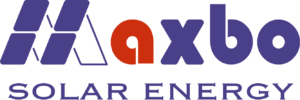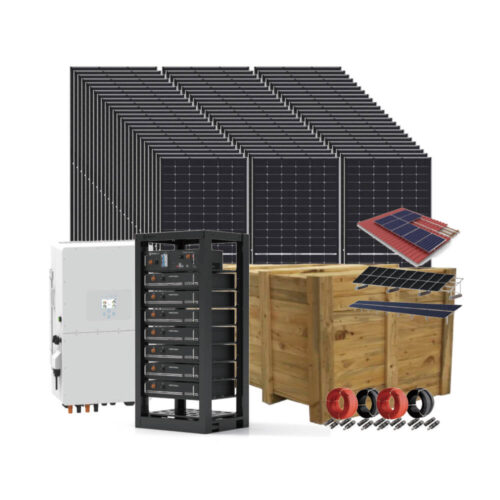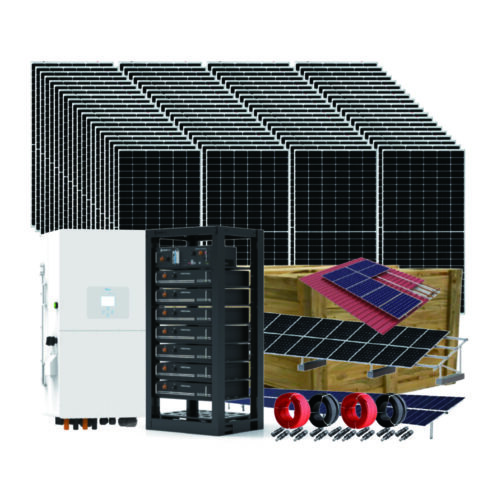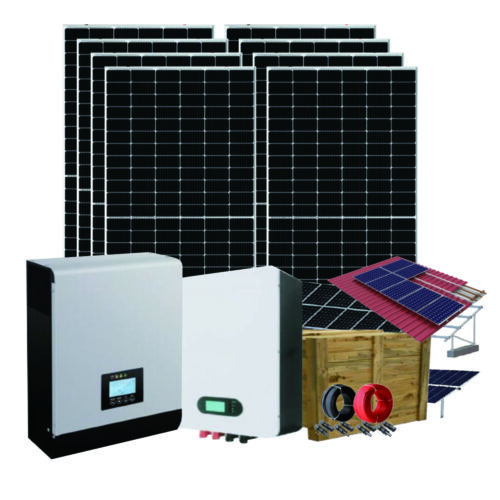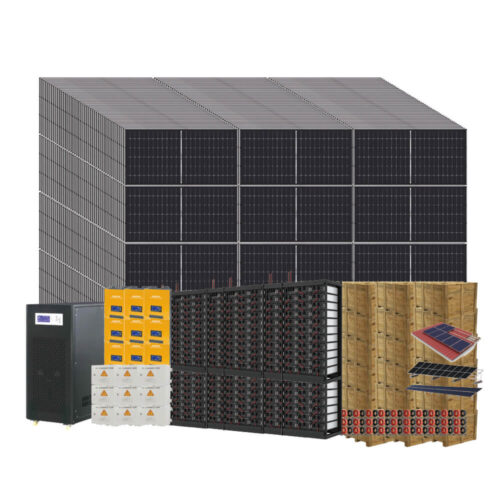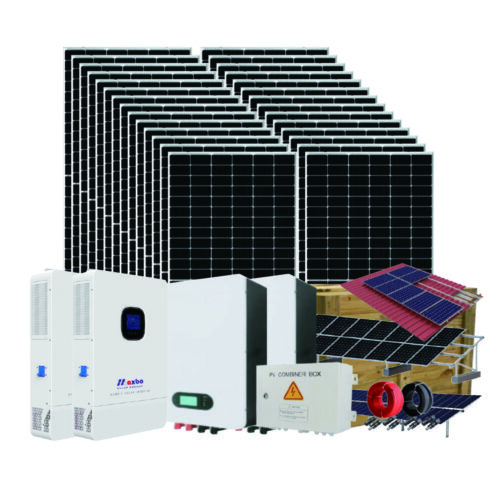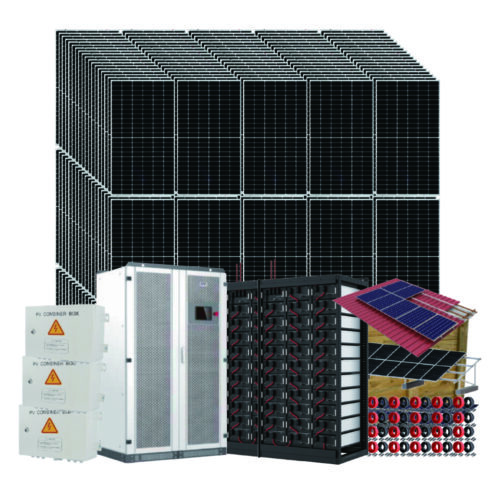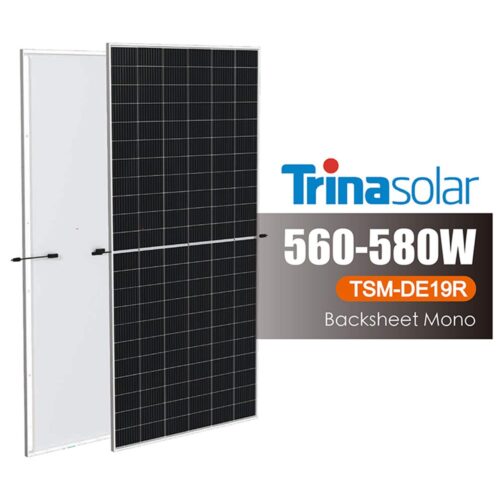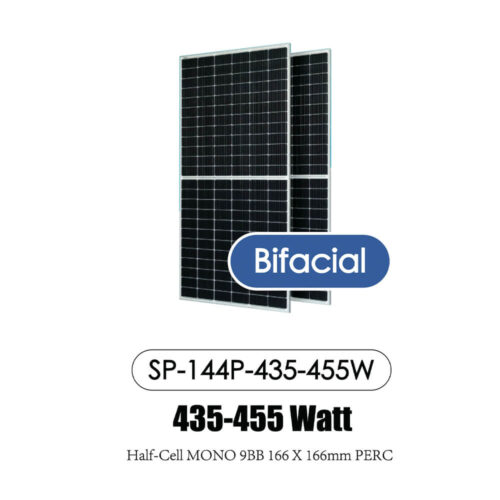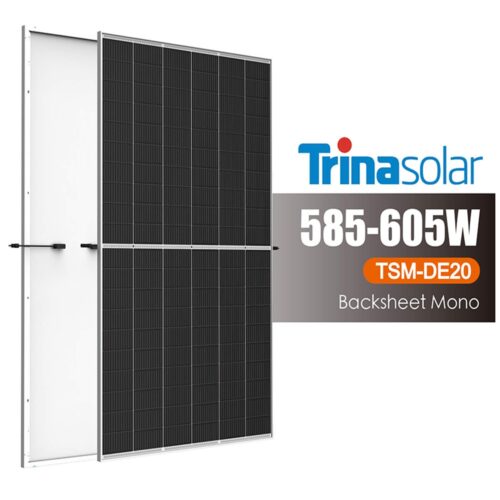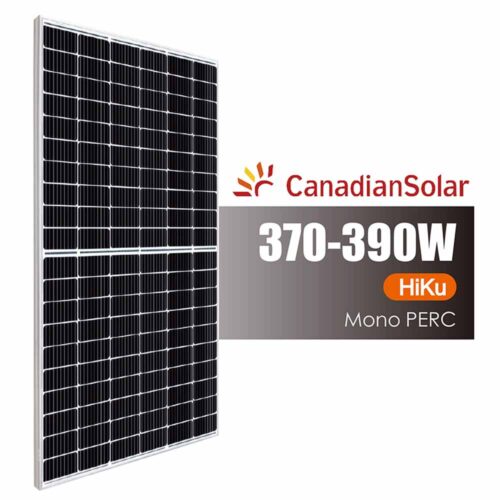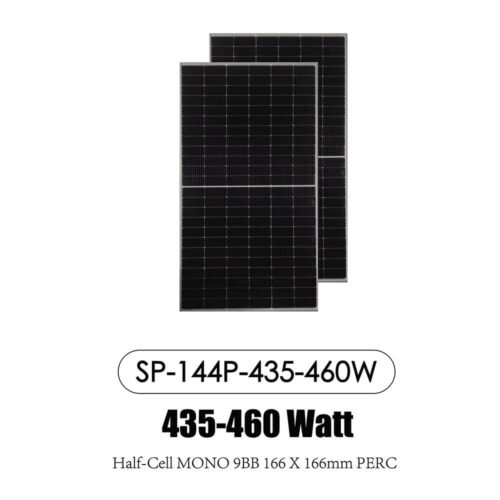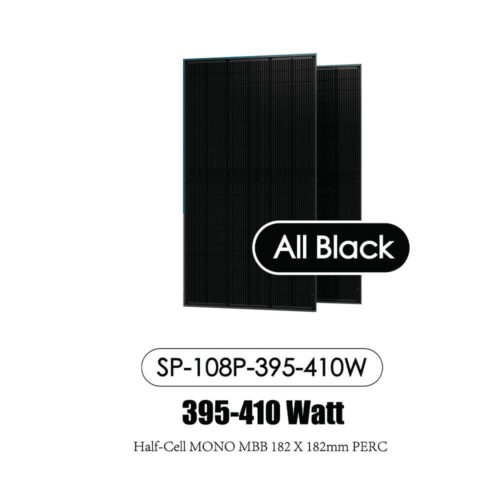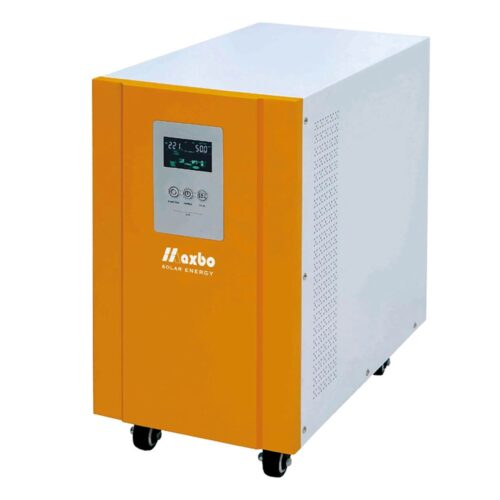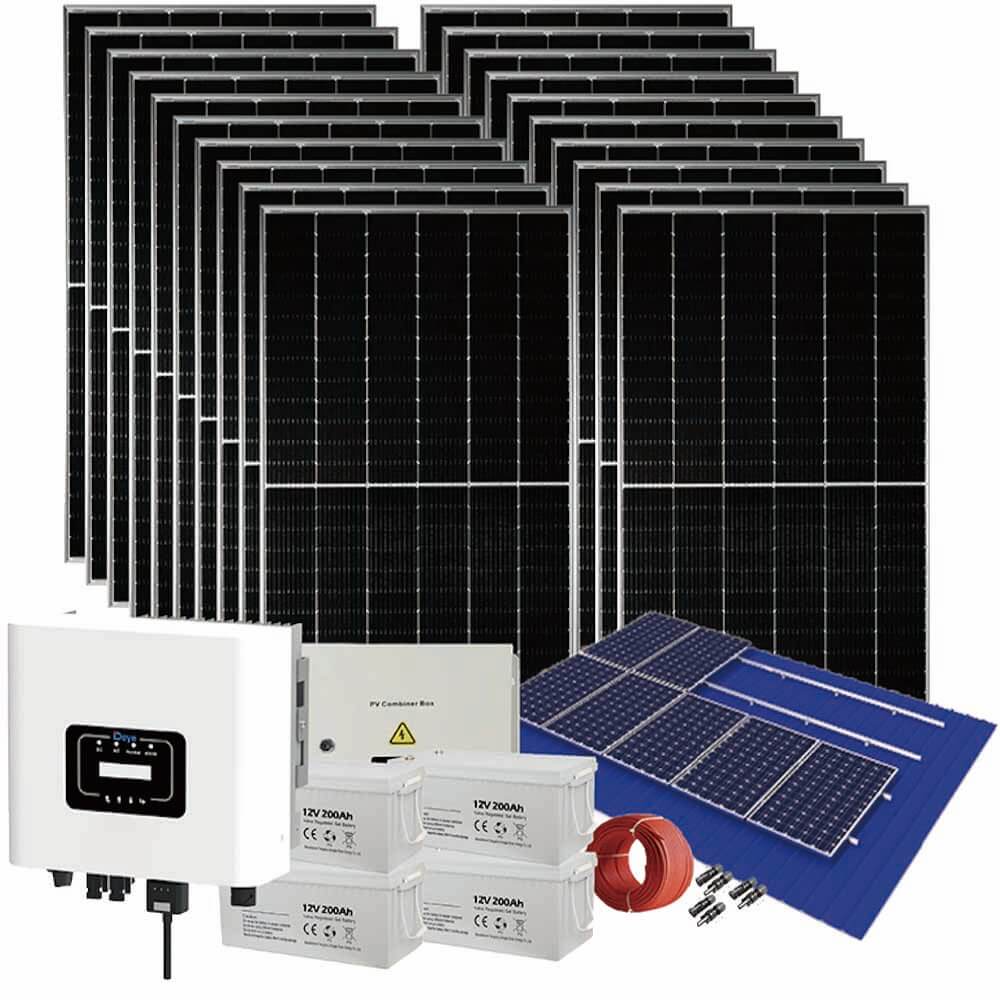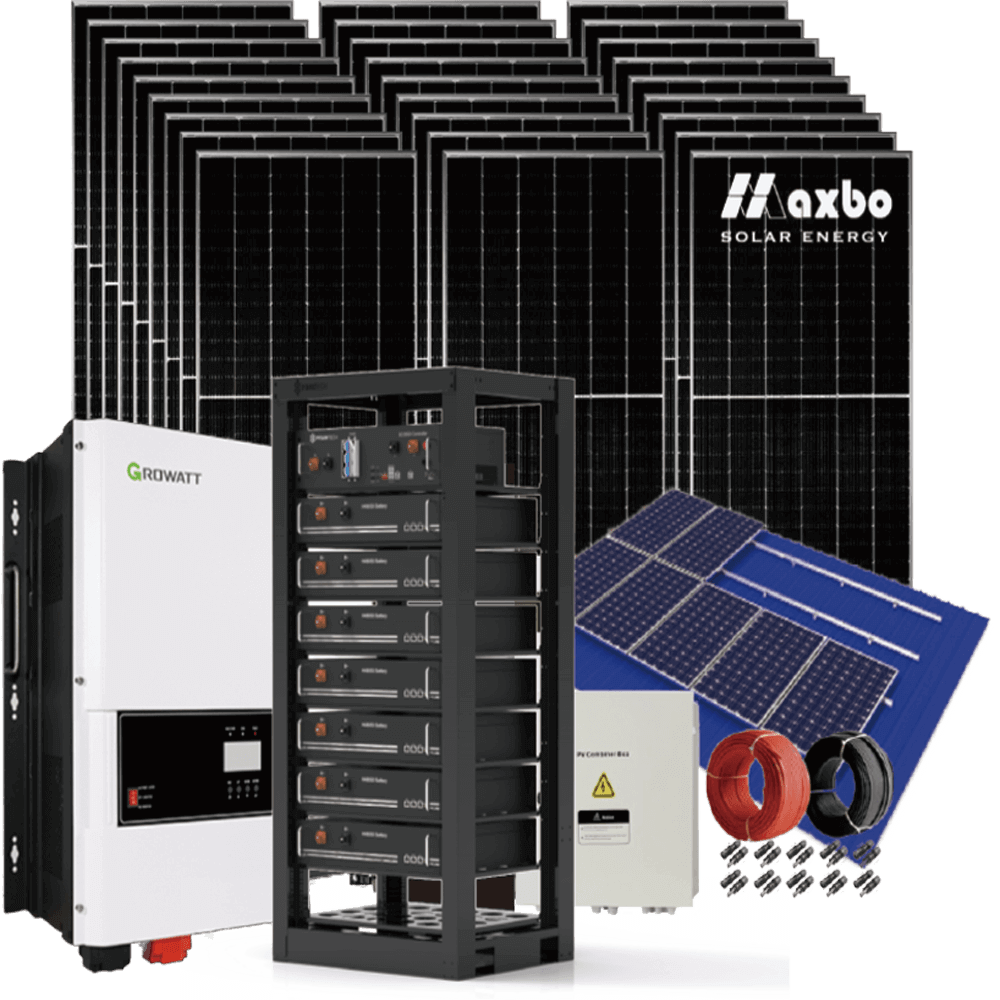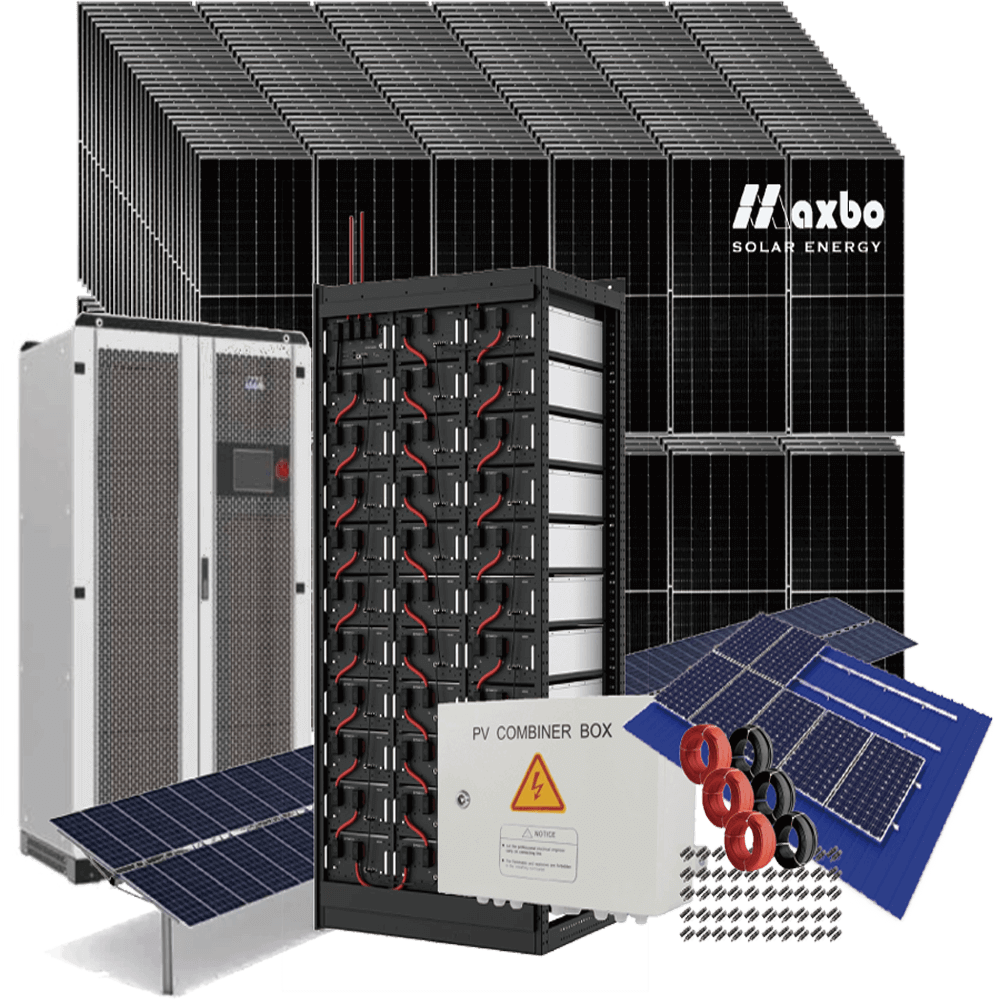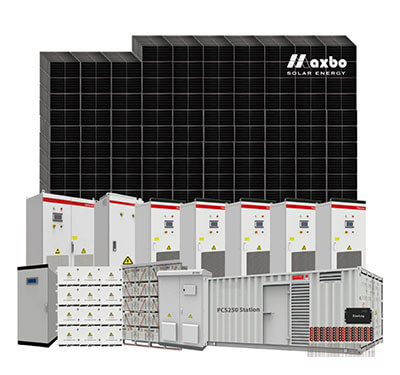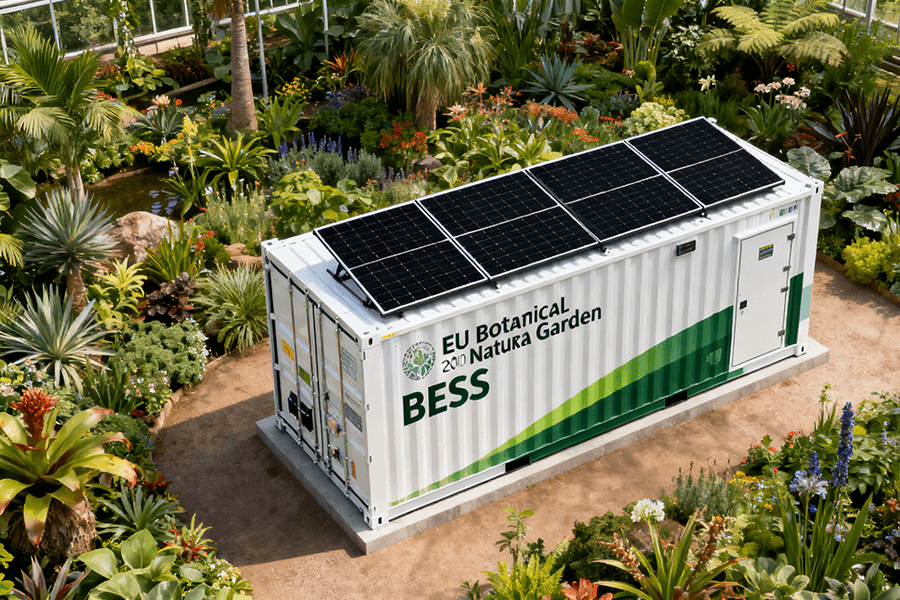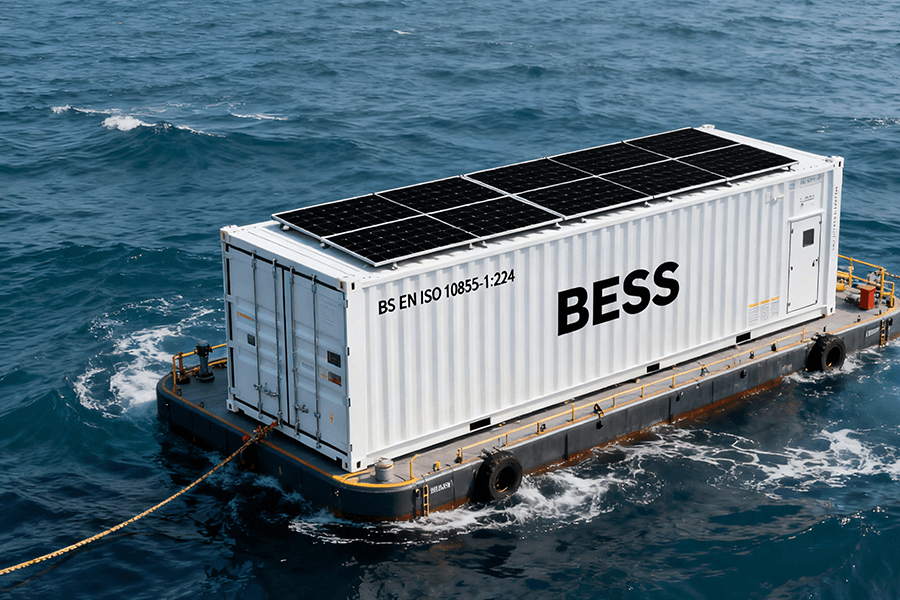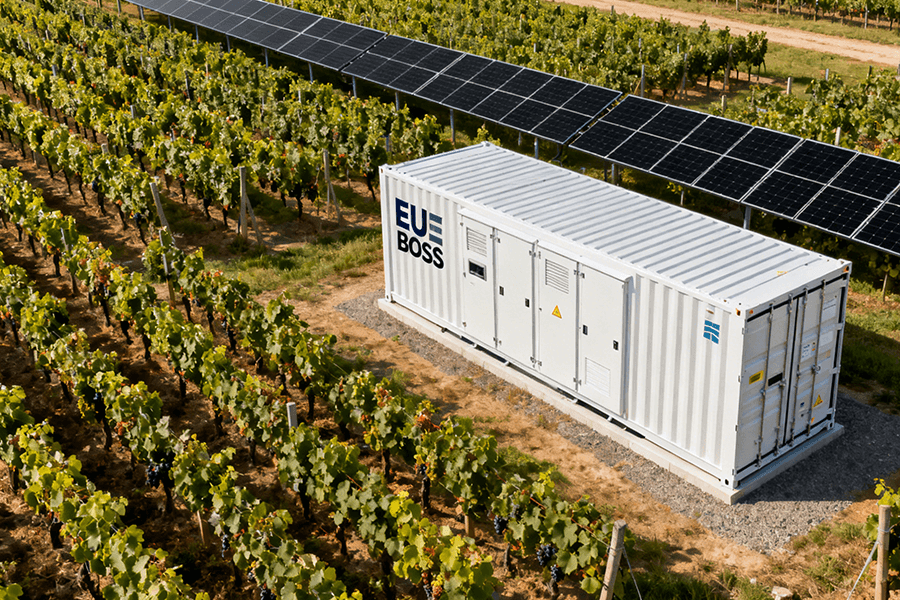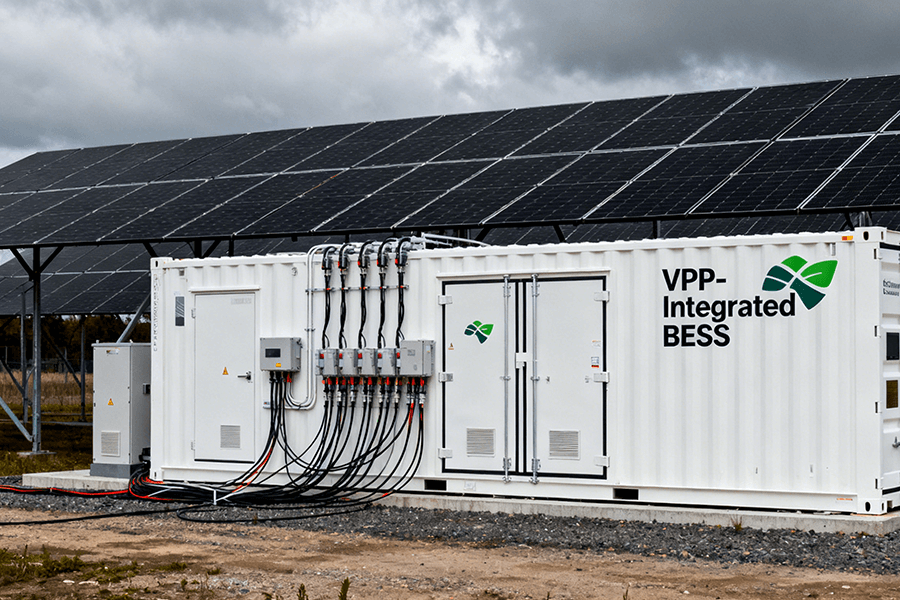10 kW Solar Power Plant Cost: The total cost of a 10kW solar system is around $2600 and $4800.
As the demand for solar energy systems in Europe increases, many European homes and small businesses are choosing solar energy systems as an electricity solution, which can result in significant savings on their electricity bills in the long run. Maxbo calculates the total cost of a 10kW solar system to be between $2,600 and $4,800.
This article will analyze the cost components of a 10 kW solar system for European customers and compare the various options to help you make the right decision.
Breakdown of 10 kW Solar System Costs
A 10 kW solar power plant comprises several key components, each contributing to the total cost. Below is an expanded cost analysis based on typical market prices for systems in Europe, along with details to help you understand the value and performance of each part.
| Component | Details | Cost (USD) | Notes |
|---|---|---|---|
| Solar Panels | 18 × 550W panels ( $0.08–$0.09 per watt) |
$800–$900 | High-efficiency monocrystalline panels are ideal for space-limited installations. |
| Inverter | Options include: grid-tie, hybrid, or off-grid models | $400–$1800 | Premium brands like Growatt and Deye offer advanced features but cost more. |
| Storage Batteries | 10–20 kWh (gel or lithium-ion options) |
$600–$2400 | Lithium-ion batteries offer longer lifespan and better efficiency. |
| Mounting Structures | Roof or ground mounting | $400–$800 | Costs vary based on material, design, and installation complexity. |
| Cabling and Other | Wiring, connectors, and additional materials | $300–$500 | Includes essential safety components and connectors. |
Total Estimated Cost:
$2600–4800, depending on the choice of components and installation requirements.
Detailed Cost Comparison by Component
Solar panels are a key component, directly affecting energy generation efficiency and overall system performance. Here’s a closer look at the options:
| Panel Type | Efficiency | Cost per Watt (USD) | Total Cost for 10 kW (USD) | Recommended Use |
|---|---|---|---|---|
| Monocrystalline | 18%–22% | $0.08–$0.09 | $800–$900 | Best for areas with limited space, offering high efficiency and durability. |
| Polycrystalline | 15%–18% | $0.06–$0.07 | $600–$700 | More affordable but less efficient, suitable for larger installations. |
| Thin-Film | 10%–12% | $0.05–$0.06 | $500–$600 | Lightweight and flexible; ideal for large, open spaces or specific applications. |
Insights:
• Monocrystalline panels
are highly efficient and better suited for European households with limited roof space.
• Polycrystalline panels
are cost-effective but less efficient, making them suitable for larger ground-mounted installations.
• Thin-film panels
are lightweight and versatile but require more surface area to match the output of crystalline panels.
Solar Inverters
The inverter converts DC electricity from the panels into AC electricity for household use. Depending on your system setup, different inverter types may be required:
| Inverter Type | Function | Cost (USD) | Brands | Notes |
|---|---|---|---|---|
| Grid-Tie | For selling energy back to the grid | $800–$1500 | Maxbo, Growatt, Fronius | Ideal for households connected to the grid. |
| Hybrid | Combines self-use and grid export | $400–$1000 | Maxbo, Deye, Solis | Supports battery integration for enhanced energy management. |
| Off-Grid | For standalone systems | $1000–$1800 | Maxbo, Victron Energy, SMA | Suitable for remote or off-grid locations. |
Insights:
• Grid-tie inverters
are the most affordable and efficient for homes connected to public electricity networks.
• Hybrid inverters
offer flexibility by supporting battery storage, making them ideal for regions with unstable grids.
• Off-grid inverters
are required for stand-alone systems and cannot be used grid-connected.
Storage Batteries
Batteries store excess energy for use during nighttime or low-sunlight periods. Depending on your energy needs, you can choose between gel or lithium-ion batteries:
| Battery Type | Capacity (kWh) | Cost per kWh (USD) | Total Cost (USD) | Advantages |
|---|---|---|---|---|
| Gel Batteries | 10–20 | $60–$85 | $600–$1700 | Affordable and suitable for moderate energy storage needs. |
| Lithium-Ion Batteries | 10–20 | $90–$120 | $900–$2400 | High efficiency, long lifespan, and better performance. |
Insights:
• Gel batteries
are cost-effective but have a shorter lifespan and lower energy density, making them suitable for budget-conscious users.
• Lithium-ion batteries
are more expensive upfront but offer better performance, longer lifespan, and higher energy efficiency, making them a preferred choice for European households aiming for energy independence. 10 kw solar plant price
Mounting Structures
The cost of mounting structures depends on whether the panels are installed on a roof or the ground. Materials like aluminum are commonly used for their durability and lightweight properties.
| Type | Cost (USD) | Notes |
|---|---|---|
| Roof-Mounted | $400–$600 | Ideal for urban areas with limited ground space. |
| Ground-Mounted | $600–$800 | Suitable for rural areas with ample open space. |
Insights:
• Ground-mounted systems
are easier to clean and maintain but require additional land.
• Roof-mounted systems
save space and integrate seamlessly with existing structures.
Cabling and Other Components
High-quality cables, connectors, and safety components ensure the system operates efficiently and safely. Typical costs range from $300–500, depending on the complexity of the installation.
Key Takeaways
• Cost Range:
The total cost for a 10 kW solar power plant in Europe ranges between $2600 and $4800, with variations based on component selection, installation complexity, and location.
• Optimal Setup:
Monocrystalline panels, hybrid inverters, and lithium-ion batteries are recommended for their efficiency, flexibility, and long-term value.
• Regional Variations:
Southern Europe benefits from lower costs due to abundant sunlight, while Northern Europe requires higher-capacity systems and robust battery storage to ensure reliability.
By understanding these components and their costs, homeowners and businesses in Europe can make well-informed decisions when investing in solar power systems.
Case Studies:
To better illustrate how a 10 kW solar system can be tailored to meet different needs, here are three case studies of customers from various European regions. Each example outlines the customer’s requirements, system configuration, and total cost.
Case 1: Residential Installation in Southern Europe (Spain)
Customer Profile:
• Location: Barcelona, Spain
• House Size: 120㎡ medium-sized home
• Monthly Energy Usage: 600 kWh
• Goals: Minimize reliance on the grid, reduce electricity bills, and achieve a 5-year payback.
System Design:
• Solar Panels: 18 × 550W monocrystalline panels ($800–900).
• Inverter: 10 kW hybrid inverter ($1200).
• Battery Storage: 10 kWh lithium-ion battery ($1000).
• Mounting and Cabling: Roof-mounted system with aluminum structures ($600).
Total Cost: $3600–3700
Performance:
• Generates approximately 14,000 kWh annually with 6 sunlight hours/day.
• Annual electricity savings: $2800 (at $0.20/kWh).
• Payback period: 1.5 years (excluding subsidies).
Case 2: Hybrid System in Central Europe (Germany)
Customer Profile:
• Location: Munich, Germany
• House Size: 150㎡ medium-to-large home
• Monthly Energy Usage: 800 kWh
• Goals: Leverage government feed-in tariffs, ensure stable nighttime energy supply, and achieve long-term savings.
System Design:
• Solar Panels: 18 × 550W monocrystalline panels ($800–900).
• Inverter: 10 kW hybrid inverter ($1500).
• Battery Storage: 20 kWh lithium-ion battery ($1800–2000).
• Mounting and Cabling: Roof-mounted system with reinforced brackets ($700).
Total Cost: $4800–5100
Performance:
• Generates approximately 12,000 kWh annually with 4 sunlight hours/day.
• Annual electricity savings: $3000 (at $0.25/kWh).
• Feed-in tariff revenue: $600/year.
• Payback period: 3–4 years (including government incentives).
Case 3: Off-Grid System for a Remote Home in Northern Europe (Sweden)
Customer Profile:
• Location: Gothenburg, Sweden
• House Size: 100㎡ small home
• Monthly Energy Usage: 500 kWh
• Goals: Achieve full energy independence with reliable storage for winter months.
System Design:
• Solar Panels: 20 × 500W monocrystalline panels ($1000).
• Inverter: 10 kW off-grid inverter ($1800).
• Battery Storage: 20 kWh gel battery ($1400).
• Mounting and Cabling: Ground-mounted system with adjustable tilt brackets ($800).
Total Cost: $5000–5200
Performance:
• Generates approximately 9,000 kWh annually with 3 sunlight hours/day.
• Full energy independence with battery backup for 48 hours of use.
• Payback period: 5 years, with additional savings in off-grid fees.
Comparison Table of Case Studies
| Case | Location | System Configuration | Total Cost (USD) | Payback Period | Key Features |
|---|---|---|---|---|---|
| Spain | Southern Europe | Hybrid inverter, 10 kWh battery, roof mount | $3600–3700 | 1.5 years | Low cost, quick payback. |
| Germany | Central Europe | Hybrid inverter, 20 kWh battery, roof mount | $4800–5100 | 3–4 years | Feed-in tariff and strong savings. |
| Sweden | Northern Europe | Off-grid inverter, 20 kWh gel battery, ground mount | $5000–5200 | 5 years | Full off-grid independence. |
These case studies demonstrate how a 10 kW solar power plant can be customized to meet diverse needs, from sunny regions like Spain to energy-independent setups in Northern Europe. The total cost varies based on components, but the long-term savings and environmental benefits make solar energy a worthwhile investment for European homeowners.
Maxbo specializes in designing tailored solar solutions, ensuring that your system meets local conditions, budget, and energy goals. Contact Maxbo today to find the perfect solar power solution for your home or business.
Factors Influencing Costs in Europe
The cost of a 10 kW solar power plant in Europe is influenced by a range of factors, including regional variations in sunlight, government incentives, and installation complexities. Understanding these factors can help homeowners and businesses make better decisions when investing in solar energy.
Regional Variations
Different regions in Europe experience varying levels of sunlight, which directly impacts the efficiency and cost-effectiveness of solar systems. Here’s a breakdown:
• Southern Europe (Italy, Spain):
With 6–7 sunlight hours/day, these regions have abundant solar energy, reducing the need for large battery storage. Systems in Southern Europe often start at $2600, with lower operating costs due to high energy generation efficiency.
o Advantages: Smaller systems with fewer panels can meet energy needs.
o Challenges: High temperatures may slightly reduce panel efficiency over time.
• Central Europe (Germany, France):
Moderate sunlight, averaging 4–5 hours/day, requires larger systems or hybrid inverters to ensure consistent energy supply. Costs typically range from $3200 to $4000, with many homeowners taking advantage of government feed-in tariffs to offset expenses.
o Advantages: Strong incentives, such as feed-in tariffs and tax deductions, enhance affordability.
o Challenges: Seasonal variations in sunlight can impact energy consistency.
• Northern Europe (UK, Nordics):
Limited sunlight (2–3 hours/day) and seasonal variations necessitate robust battery storage systems to ensure reliability. Systems here cost $4000–$4800, with higher upfront investments in batteries and more panels.
o Advantages: Grants and subsidies make solar installations more viable.
o Challenges: Longer payback periods due to reduced annual energy output.
| Region | Sunlight Hours (per day) | System Cost (USD) | Notes |
|---|---|---|---|
| Southern Europe | 6–7 | $2600–$3200 | Low dependency on batteries; high efficiency. |
| Central Europe | 4–5 | $3200–$4000 | Balanced system size; good government support. |
| Northern Europe | 2–3 | $4000–$4800 | Larger systems and robust batteries needed. |
Government Incentives
Solar installations across Europe benefit from various government incentives, making renewable energy more accessible:
• Germany:
Offers feed-in tariffs, allowing homeowners to sell excess electricity back to the grid at a guaranteed rate. Tax deductions further reduce the upfront cost of solar systems.
o Example: A homeowner installing a 10 kW system can earn approximately $600/year through feed-in tariffs.
• France:
Provides subsidies specifically for hybrid systems and battery storage, encouraging energy independence and efficient energy use.
o Example: A hybrid system with 10 kWh battery storage may receive rebates of up to 20% of the system cost.
• United Kingdom:
Grants and incentives are available for solar installations, particularly those with battery storage. The government also promotes net metering, which allows households to offset energy bills by feeding excess electricity back into the grid.
o Example: The Smart Export Guarantee (SEG) program ensures homeowners are compensated for exporting solar energy.
Installation Costs
Installation costs depend on the complexity of the setup and local labor rates. Typical costs range from $500 to $1500 in Europe. Factors influencing installation costs include:
• Roof Type:
o Flat roofs are easier and cheaper to install panels on compared to pitched or tiled roofs, which may require custom brackets.
• System Complexity:
o Hybrid or off-grid systems with batteries and inverters involve more labor and equipment, increasing installation costs.
• Regional Labor Rates:
o Labor is more expensive in countries like Germany and the UK, compared to Spain or Eastern Europe.
Comparing 10 kW Solar Costs with Electricity Savings
A 10 kW solar system not only reduces energy costs but also generates long-term savings. Below is a comparative analysis of savings and payback periods across Europe:
| Region | Annual Energy Output (kWh) | Cost of Electricity (USD/kWh) | Annual Savings (USD) | Payback Period (Years) | Notes |
|---|---|---|---|---|---|
| Southern Europe | 14,000–16,000 | $0.20 | $2800–$3200 | 2–3 | High sunlight ensures fast payback and low costs. |
| Central Europe | 10,000–12,000 | $0.25 | $2500–$3000 | 2.5–4 | Moderate energy output; strong incentives help. |
| Northern Europe | 8,000–10,000 | $0.30 | $2400–$3000 | 3–5 | Higher electricity costs offset lower energy output. |
Key Insights:
• Southern Europe:
The combination of abundant sunlight and lower installation costs results in the fastest payback period, typically 2–3 years.
• Central Europe:
Balanced sunlight and robust government incentives lead to a payback period of 2.5–4 years.
• Northern Europe:
Despite lower sunlight, higher electricity prices ensure annual savings remain significant, with payback periods ranging from 3 to 5 years.
Additional Factors to Consider
Panel Efficiency and Durability:
High-efficiency panels (e.g., monocrystalline) are more expensive but generate more energy, reducing long-term costs in regions with limited sunlight.
Battery Storage:
Systems in Northern Europe often require larger battery capacity to store energy during low-sunlight months, increasing upfront costs but ensuring reliability.
Energy Inflation:
Rising electricity prices across Europe make solar systems increasingly attractive, shortening payback periods over time.
Conclusion
A 10 kW solar system is an ideal and cost-effective solution for European households. The upfront cost ranges from $2,600 to $4,800, depending on regional sunshine, government, etc.
Solar systems offer significant annual energy savings and have a payback period of about 3-5 years. Homeowners can further reduce their investment costs by taking advantage of local subsidies and choosing the right modules to meet their electricity needs.
Maxbo specializes in providing customized solar solutions that ensure maximum efficiency and long-term value. Contact Maxbo to learn how a 10 kW solar power plant can transform your energy use and help you embrace a greener future.
Email: [email protected]
Visite our YouTube channel
